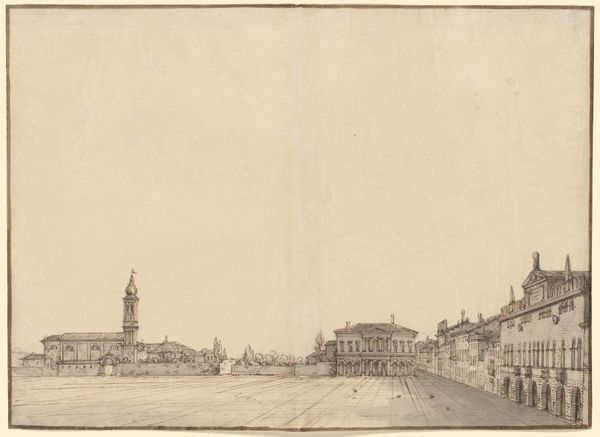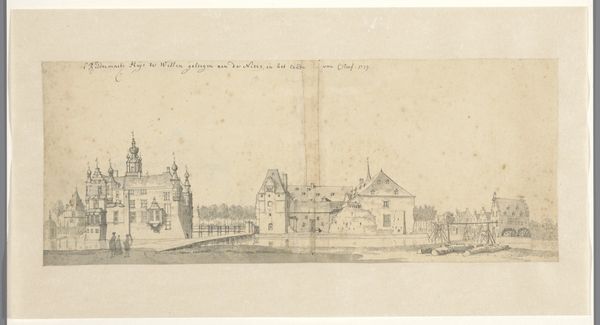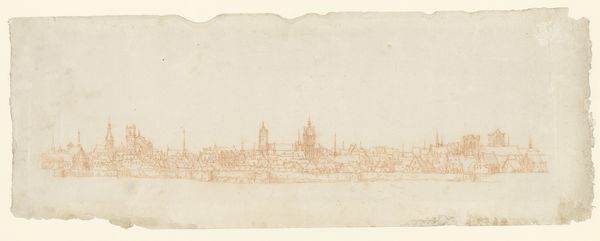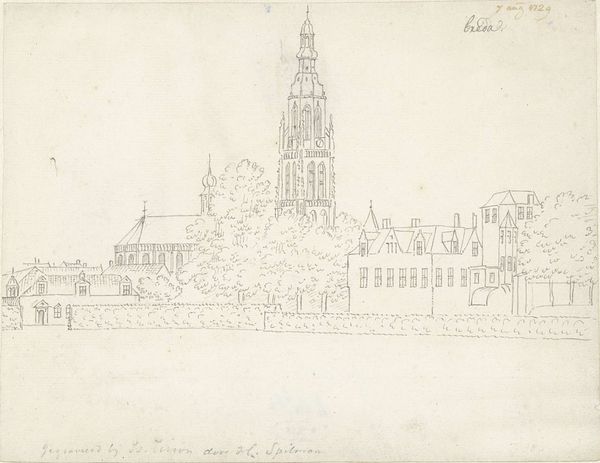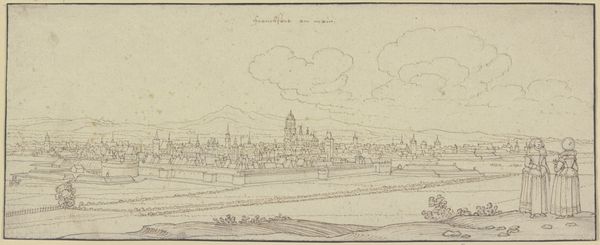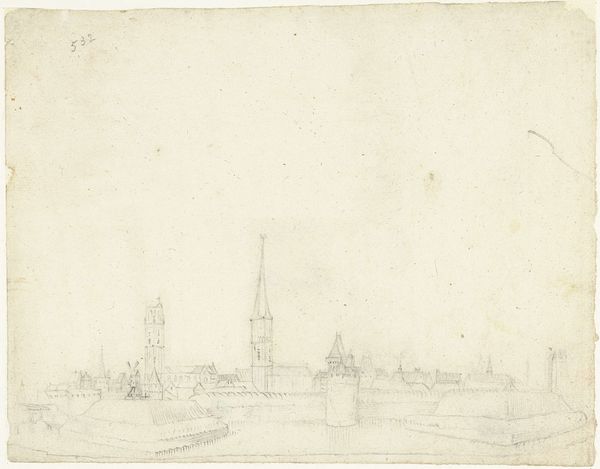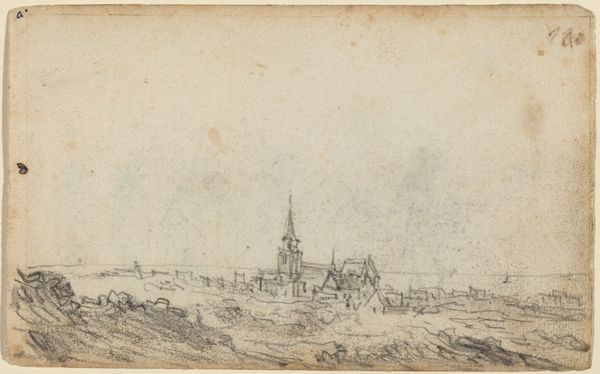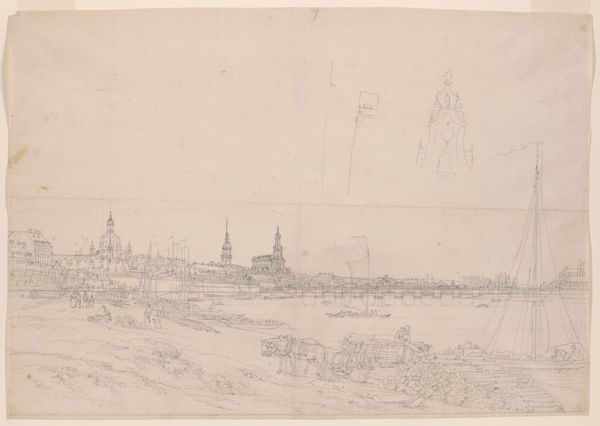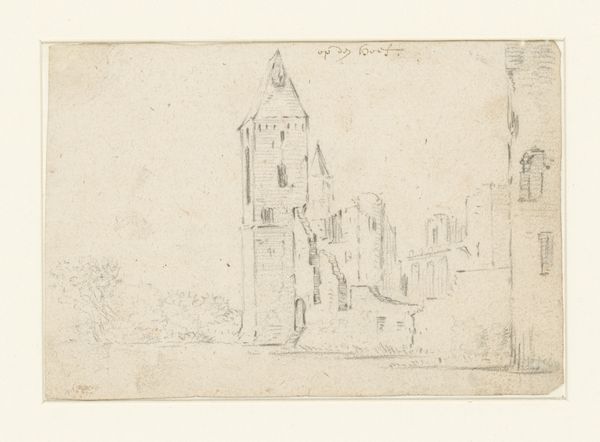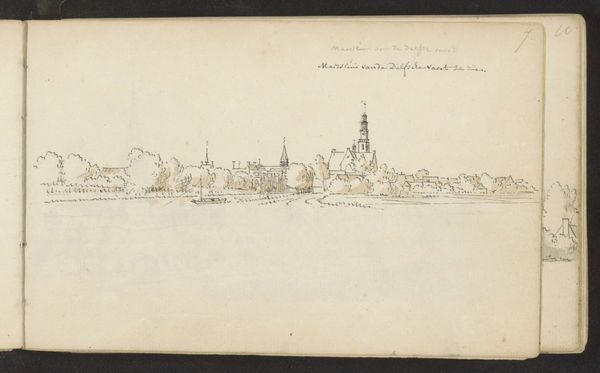
drawing, etching, paper
#
drawing
#
baroque
#
etching
#
landscape
#
etching
#
paper
#
cityscape
Dimensions: height 200 mm, width 1585 mm
Copyright: Rijks Museum: Open Domain
Editor: This is Remigio Cantagallina’s “Panorama van Antwerpen,” an etching and drawing from the 17th century, now housed at the Rijksmuseum. The first thing I notice is the calm, almost dreamlike quality despite its urban subject. It seems so precise yet light. What stands out to you in this piece? Curator: I see a city portrait, not just a visual record, but a statement about Antwerp's identity. The church tower dominates, doesn’t it? Consider how, for viewers of the time, it was not simply architecture but a symbol of the city's spiritual and economic power, reaching towards the heavens, anchoring earthly life. What emotional weight would that hold? Editor: That's fascinating, how a building could represent so much more. So the skyline itself would function like a visual language? Curator: Exactly. The skyline isn’t neutral. Note how the orderly houses reinforce that sense of civic pride and prosperity. The etching's linear precision mimics the meticulous organization of the city itself. How might that organized composition itself promote certain ideologies or societal beliefs? Editor: It definitely presents a controlled and ordered view of Antwerp, maybe glossing over any potential social issues or unrest that were present. Curator: Precisely. Images speak volumes, selecting and omitting information in ways that reinforce specific cultural narratives. Think of how different choices in viewpoint and details might have given a completely different emotional impression of the city. Editor: I see what you mean. It's much more than just a landscape; it's a constructed representation loaded with meaning. I never would have considered it like that. Curator: That's the beauty of it. The more we look, the more these layers reveal themselves. There's always a story beyond the surface, a conversation between the artist, the city, and the viewer across centuries.
Comments
No comments
Be the first to comment and join the conversation on the ultimate creative platform.
